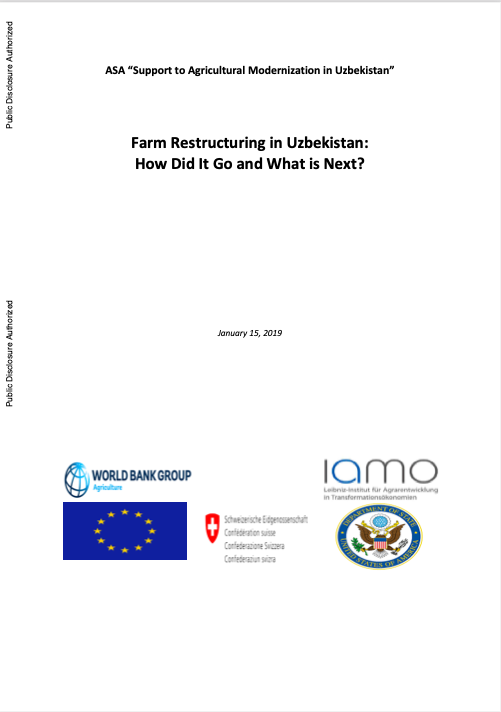Resource information
In January 2019, Uzbekistan started a new farm restructuring1. It is said to seek to optimize the use of farmland by increasing the size of farms producing wheat and cotton, reallocating land to more efficient farmers and even clusters, and improving crop rotation options. This is not the first time that this kind of farm restructuring in Uzbekistan takes place. The country has gone through several waves of farm restructuring and land reallocations. Both these processes were administratively managed, with little reference to market or income generation opportunities. During 1992-1997, state farms were decollectivized. During 1998-2002, farm fragmentation into small production units has started, which was completed during 2003-2008. Unsatisfied with the performance of fragmented farms, the government started farm consolidation between 2008/2009 and 2016, creating a dual system when dekhkan smallholders averaging 1 hectare (ha) and producing livestock and horticulture products coexisted with large individual farms, averaging 40-60 ha and producing cotton and wheat under the state order system. The 2019 restructuring seeks to double the size of cotton and wheat farms to the average of 100 ha.

